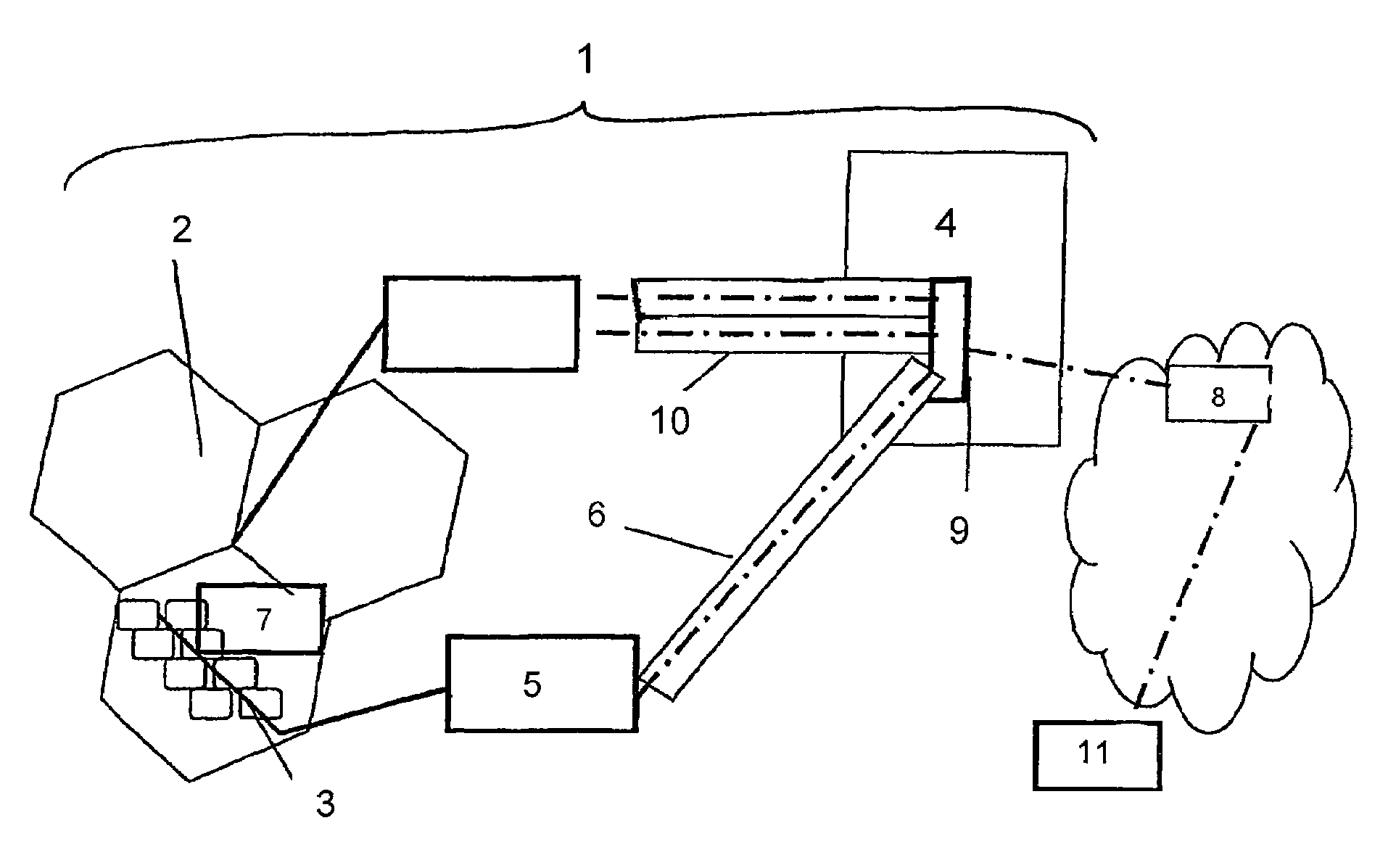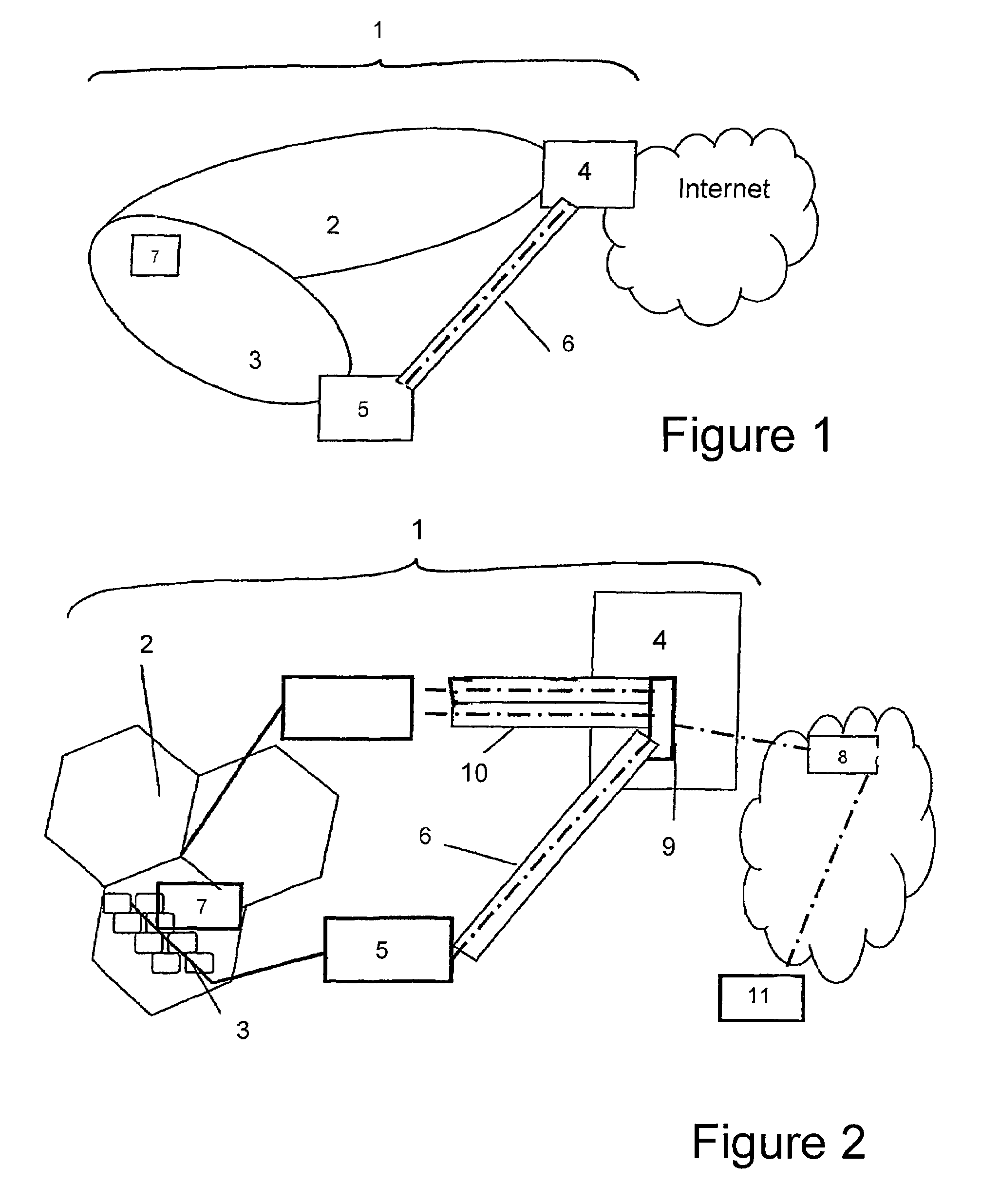Heterogeneous mobile radio system
- Summary
- Abstract
- Description
- Claims
- Application Information
AI Technical Summary
Benefits of technology
Problems solved by technology
Method used
Image
Examples
Embodiment Construction
[0038]FIG. 1 shows a heterogeneous mobile radio system 1 according to the invention, which has a first mobile radio network 2, preferably a 2G / 3G mobile radio network such as a GSM-GPRS and / or UMTS-GPRS, and a second mobile radio network 3, such as a WLAN. The first mobile radio network 2 has an access node 4, a GGSN in the case of GSM-GPRS and / or UMTS-GPRS, in which a home agent function is integrated. The second mobile radio network 3 likewise has an access node 5. Both access nodes 4, 5 act as access routers. A data tunnel 6 is formed between the access nodes 4 and 5. In order to make it possible to set up this data tunnel 6, a mobile terminal 7 signals the address of the access node 4 for the first mobile radio network 2 to the access node 5 for the second mobile radio network 3. There are several alternatives. First, the access node 4 for the first mobile radio network 2, for example a GGSN, can distribute its address or the home agent address via the first mobile radio network...
PUM
 Login to View More
Login to View More Abstract
Description
Claims
Application Information
 Login to View More
Login to View More - R&D
- Intellectual Property
- Life Sciences
- Materials
- Tech Scout
- Unparalleled Data Quality
- Higher Quality Content
- 60% Fewer Hallucinations
Browse by: Latest US Patents, China's latest patents, Technical Efficacy Thesaurus, Application Domain, Technology Topic, Popular Technical Reports.
© 2025 PatSnap. All rights reserved.Legal|Privacy policy|Modern Slavery Act Transparency Statement|Sitemap|About US| Contact US: help@patsnap.com


